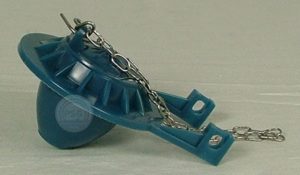October 2016
How to Maintain Your Garbage Disposal
Even though you already know your garbage disposal won’t last forever, what’s wrong with it lasting “longer than expected”?
Absolutely nothing! And Boden Plumbing Heating & Air is here to explain how you can accomplish that money-saving goal:
- Feed your disposal a little at a time. While you’re at it, take care to keep utensils and your hands out of the drain.
- Keep all fibrous foods out of the disposal since they’re likely to clog your drain – the disposal simply can’t properly grind them. That goes for food scraps like corn husks, onion skins, celery, and most soft vegetables.
- Deodorize the disposal. Cut a lemon into small pieces and drop the fruit into the disposal along with some baking soda or distilled white vinegar. Turn on the cold water faucet and then the disposal. The unit will clean itself as it grinds up the mixture. Use a strong flow of cold water and keep it running at least 30 seconds after the grinding noise has stopped. This helps to flush food all the way down the drain line.
- Do not put uncooked meat fat or liquid fats into your disposer.
Still, even with all the “TLC” in the world, sooner or later you’re bound to run into a problem. In fact, you probably have one if you hear or see any of the following signs:
 If the disposal won’t run, check the circuit breaker or fuse and replace or reset/replace as necessary. Also check to see if the disposal’s overload switch has tripped. Locate the reset button at the bottom of the disposal unit and push it.
If the disposal won’t run, check the circuit breaker or fuse and replace or reset/replace as necessary. Also check to see if the disposal’s overload switch has tripped. Locate the reset button at the bottom of the disposal unit and push it.
- If the motor hums but the disposal doesn’t run, you may have a jammed impeller – that can be fixed.
- If the disposal runs intermittently, the switch or stopper may be defective. If so, it’s probably time for a replacement unit.
- A leaky garbage disposal isn’t necessarily a sign of rust. The cause might be as simple as a loose connection, which easily can be tightened.
- If your disposal starts making a racket, turn it off immediately; chances are, something was being ground up that didn’t belong in there in the first place, like a meat bone. If you stop it in time, no harm. If not, you could be facing a damaged blade, impeller or motor.
Like all other plumbing fixtures and systems, treat your garbage disposal with care, and it will give you more years of uninterrupted service. But if and when it needs a little help to continue, one call to Boden will get you all the professional help you need.
Common Toilet Tank Problems & How to Fix Them
 When it comes to toilet troubles, the dreaded clogged and overflowing toilet bowl is one that can send most homeowners into a temporary state of panic. But things can wrong with your toilet tank, too, but usually they’re a lot easier and less stressful to resolve.
When it comes to toilet troubles, the dreaded clogged and overflowing toilet bowl is one that can send most homeowners into a temporary state of panic. But things can wrong with your toilet tank, too, but usually they’re a lot easier and less stressful to resolve.
Let’s have a look.
Toilet won’t stop running.
A continuously running toilet is more than annoying – it can be quite wasteful and costly as it constantly sends clean water down the drain.
- First, check the handle to see if it’s loose or broken.
- If the handle seems intact, remove the tank lid and check to see if the chain that connects the flushing handle to the ball valve is loose, tangled, or broken, as it could be preventing the ball valve from closing completely.
- Also check the ball valve for damage. Does it close on its own, or is it stuck?
Toilet doesn’t fill with enough water.
When this happens, too little water is being sent into the bowl following a flush, and that could result in your toilet clogging.
- Is the toilet water supply valve in the open position? Turn it to the right, then to the left, and see if the tank starts filling up with water.
- If the water supply valve is fully open, you could have a problem with the float level. In an older toilet, you can adjust the float level by bending the metal arm upward. Newer toilets either have a small clip that you can pinch and slide the float up along the rod, or a screw that you turn, one that’s located on top of the float.
- The fill valve could be clogged. The fill valve is what moves water into the tank over time, it can become clogged with mineral deposits or debris. Shut off the water to the toilet, remove the fill valve cap, and let the water run for a few seconds to flush out the debris. If this doesn’t work, you may need to replace the fill valve.
Cracks in your toilet tank are pretty easy to locate and repair, especially those above the water line. But whatever the problem, count on Boden Plumbing Heating & Air for assistance if you don’t have the time, tools, or inclination to fix it yourself. We’re your home plumbers for every reason and every season, and we look forward to help making your life a little more comfortable, convenient, and plumbing-problem free.
Recent Comments